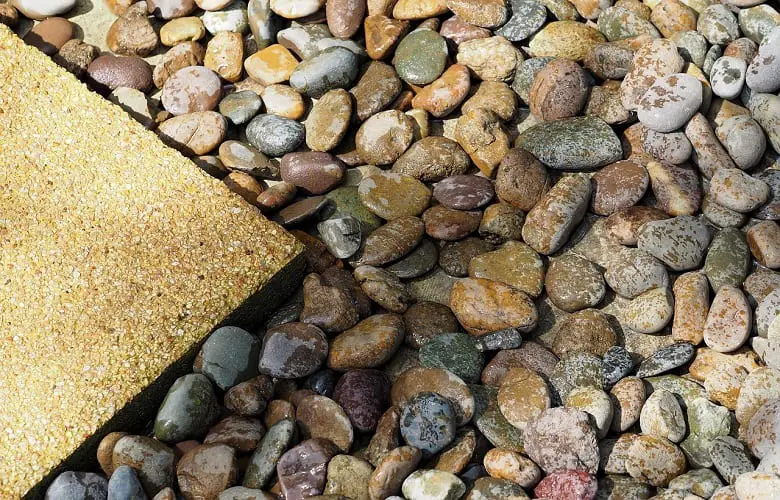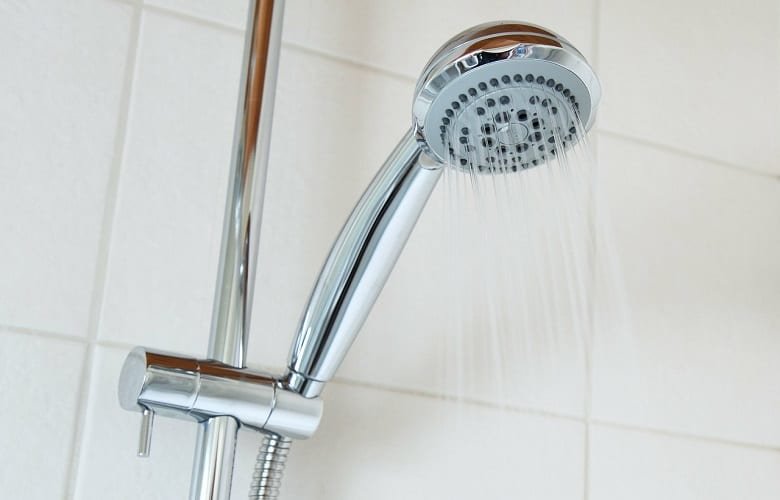A slippery bathroom floor is one of the leading causes of many bathroom falls and slip accidents, especially for children and the elderly. In the blog below, I will take you through several preventive initiatives to slip-proof a bathroom floor at home.
According to CDC (Centre for Disease Control and Prevention), many US citizens get injured by slipping in the bathroom floor or tub.
A blend of hair shampoo, soap, slippery tiles, and water accumulation in the bathroom can easily make your bathroom slippery.
The fact that regular bathrooms are small and squeezed also increases an individual’s chance of hitting their head on a surface, leading to severe injuries.
Even though bathroom accidents occur in the shower or tub, they can also occur while using the toilet, i.e., while standing from the toilet or sitting on the toilet.
So, how can one make their bathroom slip-proof? In the article below, I will take you through several tips on how to slip-proof a bathroom floor at home and recommend some of the good products you can use.
(Read more on top best fibreglass shower cleaners )
How To Slip-Proof A Bathroom Floor At Home: 10 Easy Tips
A wet slippery bathroom can be dangerous as they promote bathroom falls which can lead to fatal injuries.
Many falls at homes usually occur in our bathrooms. As a result, you should always endeavor to make your home and your bathroom accident-free.
Below are some of the tips on how to slip-proof a bathroom floor at home.
1) Segregate The Shower Quarter

A greater portion of bathrooms in our homes have an open plan style.
The sink and the shower area, plus the toilet, are next to each other in a flowing design.
As a result, the bathroom floor is always wet after you have a shower because of the open-plan style.
Partitioning the bathroom into several sections can reduce the problem of having a damp bathroom all day.
A glass wall can be used to achieve this very quickly. The glass wall will significantly regulate the water flow from the shower area to other parts of the bathroom.
With most parts of the bathroom being dry, the risk of one falling is reduced significantly.
2) Go For An Anti-Slip Floor For Your Bathroom

An anti-slip floor should be your first choice when it comes to safety in your bathroom.
Regardless of how wet the bathroom floor is, the anti-slip floor will provide much-needed friction and grip to your feet.
Pebble tiles have been recommended to be one of the safest materials one can install in their bathrooms.
Lucky enough, they are available in different colors to suit different customer styles.
3) Use An Anti-Slip Formula
An anti-slip formula is a liquid-like coating that you can apply to your bathroom floor to add an extra grip or traction.
The coating can be applied to either stone or ceramic tiles.
Anti-slip shower formulas are an excellent option if you do not want to keep on cleaning your bathroom mat or replacing them now and then.
Once the formula is applied, it gives your bathroom floor a fine sandpaper feeling, thus providing grip to your floor, whether wet or dry.
Unlike other anti-slip methods, the anti-slip formula is cheap and easy to maintain and does not require frequent maintenance.
Steps to Apply:
- Clean your bathroom floor thoroughly.
- With fine sand-grit sandpaper or scotch bright, scrub the floor, then wipe it.
- Tape out any bathroom area you do not want to apply the formula.
- Pour out the formula
- With the assistance of a roller spread, the liquid
- Let it dry. A minimum of 5 hrs is recommended though different brands recommend different timings to cure the formula.
4) Fit In Grab Rails/Bars
Grab rails/bars can make your movement around your bathroom a little bit easy, especially when it’s wet.
Strategically install grab bars around your bathroom.
Please place them in your shower, toilet, and even bathtub, to give you an added support when moving around.
There are varieties of grab rails/bars in the market.
They are available in different styles, lengths, and even textures, making it easy to choose according to your need.
You can purchase the easy-to-install grab bars with suction or buy the heavy-duty ones that require drilling and installation.
Grab bars can as well be used to hang your towel and other essentials in your bathroom, in addition to being a grab handle.
5) Use Anti-Slip Shower Rugs/Mats
Shower mats/rugs are among the most common, easy, and cheap ways to slip-proof your shower.
Once installed, they immediately add grip to your shower. To a very great extent, they notably reduce the chances of any family member tripping in the bathroom.
Different shower rugs are made from various materials such as plastic, vinyl, or PVC are available in the market.
They are all available in different sizes and shapes to cater to different customer preferences.
The vinyl or PVC rugs have got suctions cups on their bottoms, enabling them to hold fast to the bathroom floor so that the rug does not slide.
Always place your rug near the bathtub, shower, and sink for better protection.
Apart from adding that extra grip, some mats/rugs have aesthetic value to them.
The bamboo shower mat is one kind of such mat. The mat is sleek, comfortable to step on, and very stable in preventing slips.
6) Ensure Your Bathroom Has Proper Drainage.
Soapy and stagnant water in the bathroom is one of the key reasons why people trip in the first place.
For a slip-free bathroom, see to it the drainage system is proper.
A sloping bathroom is one of the structural designs which ensures the water from the shower drains well.
Besides, the round drainage hole is quite outdated and does not function well. Instead, go for a square-shaped hole, or even better, opt for an elongated drain hole.
Lastly, a shower curtain will do wonders in preventing water from the shower from flowing to the other parts of the bathroom.
Ensure to have a rug outside the shower to soak any excess water from your legs when done showering.
7) Improve Visibility By Proper Lighting
With adequate proper lighting, it is very easy to identify where water is collected in the bathroom, thus exercising caution.
Ensure your bathroom is well-lit to use both day and night.
A window to add natural light during the day will be ideal, while illuminated or pendant lights installed above the toilet will bring enough light at night.
8) Install Adhesive Strips
Adhesive strips are simple, easy to install. The top surface, which is usually rough, does provide sufficient grip in both wet and dry conditions.
Unlike the bath mats/rugs, adhesive strips do not need regular removal and cleaning.
But just like bathroom mats, the adhesive strips wear out after some time thus need to replace them.
9) Install Adjustable/Handheld Shower Head

An adjustable showerhead will reduce shower movement to great length.
It ensures the water flows in one particular direction.
With an adjustable shower head, you will be able to control the direction into which the water will flow while taking your shower.
10) Introduce A Shower Seat
Shower seats are essential for the elderly and even small kids who cannot balance themselves well in the bathroom.
It will also come in handy for people who have issues moving freely due to injuries.
So if your bathroom is spacious enough, a shower seat will be ideal.
Final Thoughts On How To Slip-Proof A Bathroom Floor At Home
Bathroom areas where we tend to move with our barefoot like the shower base can become very slippery and risky to any member of your house.
Besides, most of the time, when designing our bathroom, the idea of skid-proofing it is never incorporated.
Luckily in the blog above, I have discussed some tips on how to slip-proof a bathroom floor at home without necessarily having to remodel your bathroom afresh.
Read more on What Happens If Caulk Gets Wet Before It Cures




